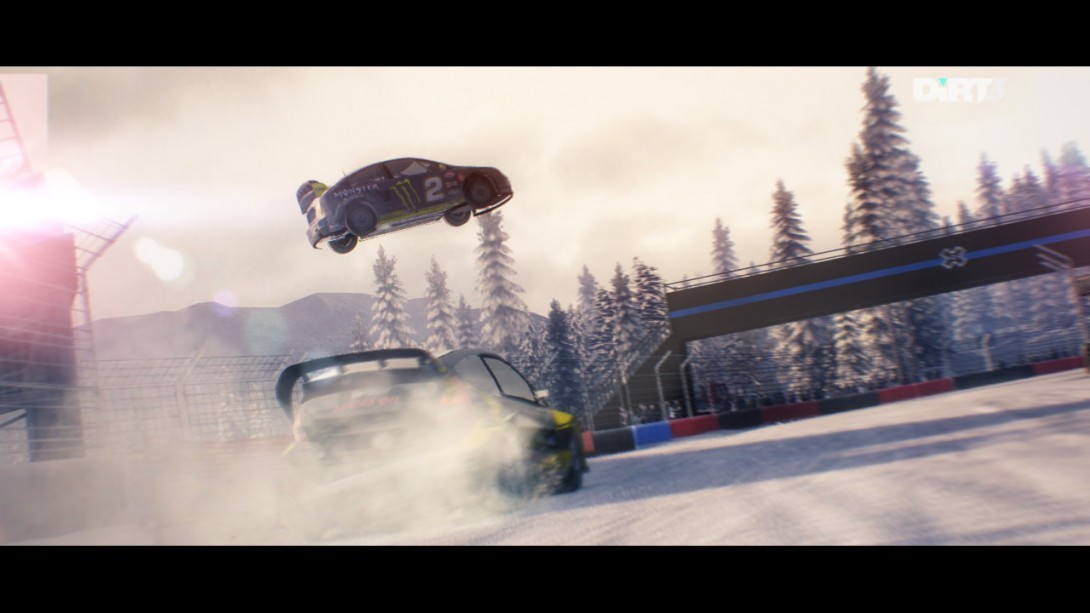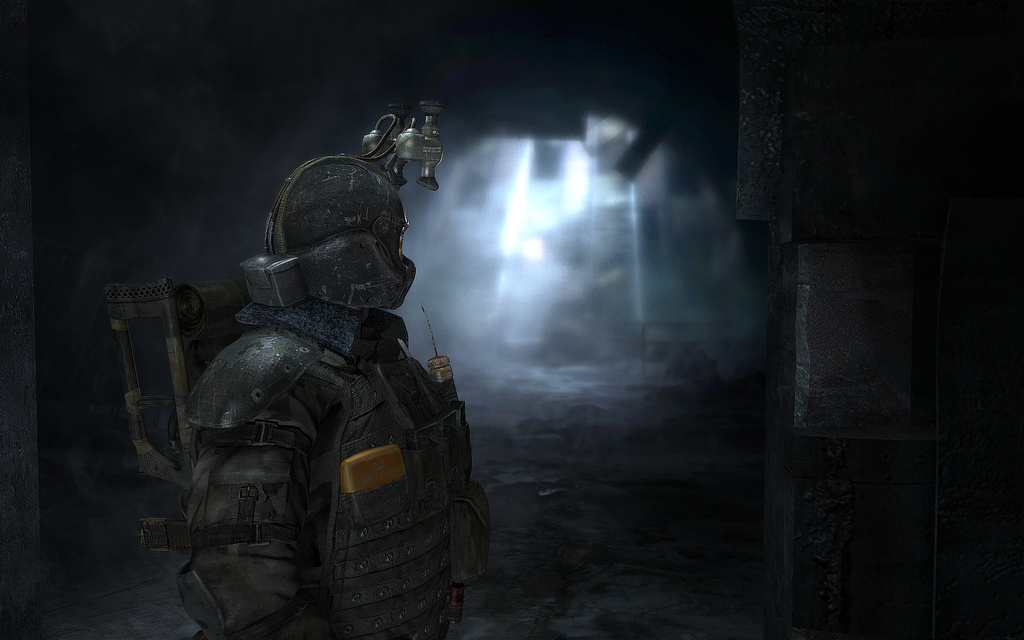What Does DirectCompute Really Mean For Gamers?
We've been bugging AMD for years now, literally, to show us what GPU-accelerated software can do. Finally, the company is ready to put us in touch with ISVs in nine different segments to demonstrate how its hardware can benefit optimized applications.
What We Tested: Other Apps And Test Config
DiRT 3
DiRT 3 employs DirectCompute for its high-definition ambient occlusion (HDAO) effect. Unfortunately, there is no equivalent effect in the game based on pixel shading, so we can’t compare the two directly. However, the game offers three AO options. The first of these, “Low,” does offer occlusion rendered under cars via pixel shading. For the purposes of DirectCompute, this is effectively an “off” setting. The “High” setting employs HDAO at half-resolution, as discussed earlier. “Ultra” runs HDAO at full resolution. All other graphics options were set to either Low or, when possible, Off.
Metro 2033
The advanced depth of field (DOF) effect in Metro 2033 needs three rendering passes. Two of these employ pixel shading, while the third uses DirectCompute. The original clear image is combined with a blurred image to create a much more realistic, cinematic appearance that can add more of a 3D feel to games without a lot of the 3D cost and (sometimes literal) headache. The DoF feature is enabled/disabled via a checkbox in the game's benchmarking tool.
Civilization 5
Civilization 5 uses DirectX 11 and DirectCompute to leverage a variable bit rate texture codec algorithm. The algorithm is so efficient that 2 GB of leader textures compress down to less than 150 MB of disk storage.
“Textures on disk are stored in a Discrete Cosine Transfer-like format,” explains AMD’s Neal Robison. “In a nutshell, this means that texture data is stored in frequency space as it allows optimal compression, similar to the JPEG format. A shader is used to rapidly decompress this data in real-time and recompress it on-the-fly into a DCT texture format, which the GPU directly supports. This allows significant reductions in the texture storage requirements. More importantly, it allows significantly faster loading of high-quality and high-resolution textures into video memory compared to what a pure CPU implementation could provide. This is why the superb-looking leader scenes appear almost instantly in the game, regardless of how many civilizations are present.”
Get Tom's Hardware's best news and in-depth reviews, straight to your inbox.
Civ5 contains an integrated benchmarking module designed to test this DirectCompute-based compression/decompression performance. You can find the tool’s usage detailed in the Civilization 5 benchmark modes.doc file within the Civilization 5 folder. By modifying a custom shortcut to the program, we used the following parameters: DX11_executable_filename –LeaderBenchmark –duration 90 –norendering. This loaded the benchmarking tool, ran it for 90 seconds, and did not allow for graphical output via compute. So, while the test is running, you can hear it, but the screen remains blank. To add DirectCompute and visual output back in, eliminate the –norendering parameter from the shortcut.
We kept our desktop test unchanged from the prior APU article, save for an update to the Asus Crosshair V Formula’s BIOS.
| Test Hardware | |
|---|---|
| Test System 1 | |
| Processor | AMD FX-8150 (Zambezi) 3.6 GHz, Socket AM3+, 8 MB Shared L3 Cache, Turbo Core enabled, 125 W |
| Motherboard | Asus Crosshair V Formula (Socket AM3+), AMD 990FX/SB950 |
| Memory | 8 GB (2 x 4 GB) AMD Performance Memory AE34G1609U2 (1600 MT/s, 8-9-8-24) |
| SSD | 240 GB Patriot Wildfire SATA 6Gb/s |
| Graphics | AMD Radeon HD 7970 3 GB |
| Row 6 - Cell 0 | AMD Radeon HD 5870 1 GB |
| Power Supply | PC Power & Cooling Turbo-Cool 860 W |
| Operating System | Windows 7 Professional, 64-bit |
| Test System 2 | |
| Processor | AMD A8-3850 (Llano) 2.9 GHz, Socket FM1, 4 MB L2 Cache, 100 W, Radeon HD 6550D Graphics |
| Motherboard | Gigabyte A75-UD4H (Socket FM1), AMD A75 FCH |
| Memory | 8 GB (2 x 4 GB) AMD Performance Memory AE34G1609U2 (1600 MT/s, 8-9-8-24) |
| SSD | 240 GB Patriot Wildfire SATA 6Gb/s |
| Graphics | AMD Radeon HD 7970 3 GB |
| Row 15 - Cell 0 | AMD Radeon HD 5870 1 GB |
| Power Supply | PC Power & Cooling Turbo-Cool 860 W |
| Operating System | Windows 7 Professional, 64-bit |
Current page: What We Tested: Other Apps And Test Config
Prev Page What We Tested: Battlefield 3 Next Page Benchmark Results: Battlefield 3 At 1920x1080-
de5_Roy would pcie 3.0 and 2x pcie 3.0 cards in cfx/sli improve direct compute performance for gaming?Reply -
hunshiki hotsacomanHa. Are those HL2 screenshots on page 3 lol?Reply
THAT. F.... FENCE. :D
Every, single, time. With every, single Source game. HL2, CSS, MODS, CSGO. It's everywhere. -
hunshikiTHAT. F.... FENCE. Every, single, time. With every, single Source game. HL2, CSS, MODS, CSGO. It's everywhere.Reply
Ha. Seriously! The source engine is what I like to call a polished turd. Somehow even though its ugly as f%$#, they still make it look acceptable...except for the fence XD -
theuniquegamer Developers need to improve the compatibility of the API for the gpus. Because the consoles used very low power outdated gpus can play latest games at good fps . But our pcs have the top notch hardware but the games are playing as almost same quality as the consoles. The GPUs in our pc has a lot horse power but we can utilize even half of it(i don't what our pc gpus are capable of)Reply -
marraco I hate depth of field. Really hate it. I hate Metro 2033 with its DirectCompute-based depth of field filter.Reply
It’s unnecessary for games to emulate camera flaws, and depth of field is a limitation of cameras. The human eye is able to focus everywhere, and free to do that. Depth of field does not allow to focus where the user wants to focus, so is just an annoyance, and worse, it costs FPS.
This chart is great. Thanks for showing it.
It shows something out of many video cards reviews: the 7970 frequently falls under 50, 40, and even 20 FPS. That ruins the user experience. Meanwhile is hard to tell the difference between 70 and 80 FPS, is easy to spot those moments on which the card falls under 20 FPS. It’s a show stopper, and utter annoyance to spend a lot of money on the most expensive cards and then see thos 20 FPS moments.
That’s why I prefer TechPowerup.com reviews. They show frame by frame benchmarks, and not just a meaningless FPS. TechPowerup.com is a floor over TomsHardware because of this.
Yet that way to show GPU performance is hard to understand for humans, so that data needs to be sorted, to make it easy understandable, like this figure shows:
Both charts show the same data, but the lower has the data sorted.
Here we see that card B has higher lags, and FPS, and Card A is more consistent even when it haves lower FPS.
It shows on how many frames Card B is worse that Card A, and is more intuitive and readable that the bar charts, who lose a lot of information.
Unfortunately, no web site offers this kind of analysis for GPUs, so there is a way to get an advantage over competition.
-
hunshiki I don't think you owned a modern console Theuniquegamer. Games that run fast there, would run fast on PCs (if not blazing fast), hence PCs are faster. Consoles are quite limited by hardware. Games that are demanding and slow... or they just got awesome graphics (BF3 for example), are slow on consoles too. They can rarely squeeze out 20-25 FPS usually. This happened with Crysis too. On PC? We benchmark FullHD graphics, and go for 91 fps. NINETY-ONE. Not 20. Not 25. Not even 30. And FullHD. Not 1280x720 like XBOX. (Also, on PC you have a tons of other visual improvements, that you can turn on/off. Unlike consoles.)Reply
So .. in short: Consoles are cheap and easy to use. You pop in the CD, you play your game. You won't be a professional FPS gamer (hence the stick), or it won't amaze you, hence the graphics. But it's easy and simple. -
kettu marracoI hate depth of field. Really hate it. I hate Metro 2033 with its DirectCompute-based depth of field filter.It’s unnecessary for games to emulate camera flaws, and depth of field is a limitation of cameras. The human eye is able to focus everywhere, and free to do that. Depth of field does not allow to focus where the user wants to focus, so is just an annoyance, and worse, it costs FPS.Reply
'Hate' is a bit strong word but you do have a point there. It's much more natural to focus my eyes on a certain game objects rather than my hand (i.e. turn the camera with my mouse). And you're right that it's unnecessary because I get the depth of field effect for free with my eyes allready when they're focused on a point on the screen. -
npyrhone Somehow I don't find it plausible that Tom's Hardware has *literally* been bugging AMD for years - to any end (no pun inteded). Figuratively, perhaps?Reply

